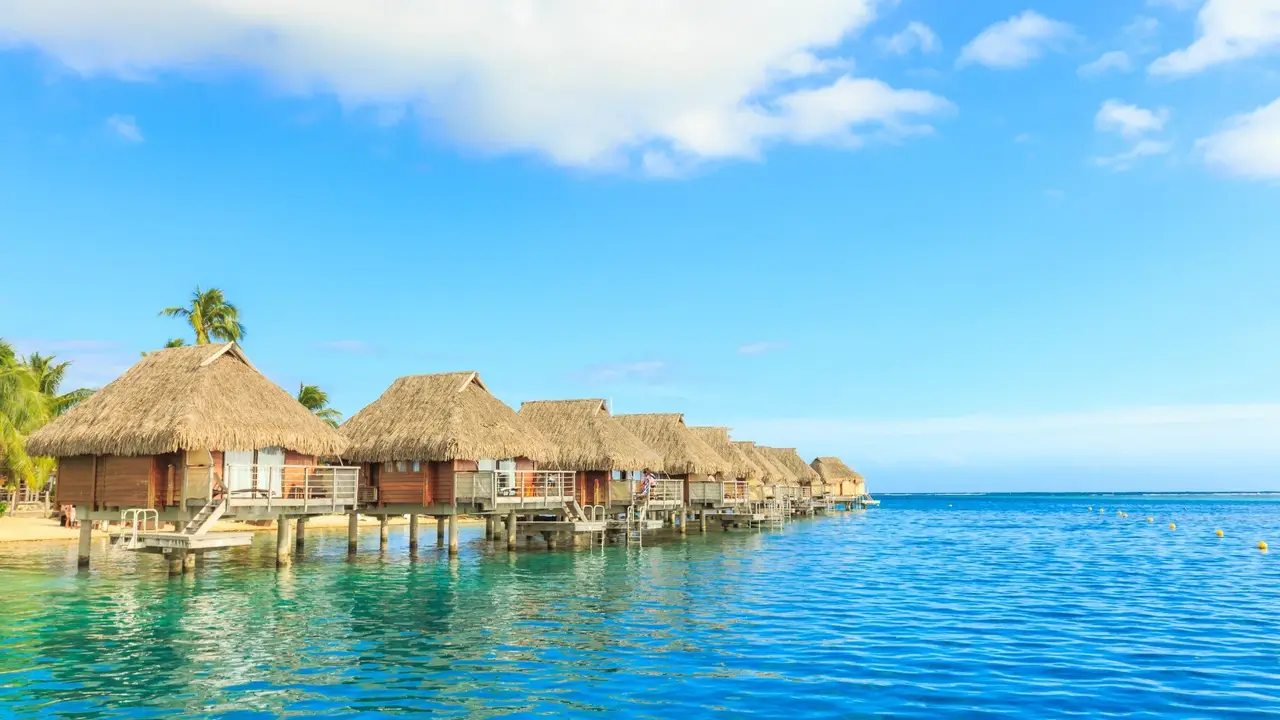Best Scuba Diving Practices for Environmental Protection
Tips for responsible diving to minimize impact on marine ecosystems and preserve underwater beauty.

Best Scuba Diving Practices for Environmental Protection
Understanding Your Impact as a Diver
Hey fellow divers! We all love exploring the incredible underwater world, right? Those vibrant coral reefs, the mesmerizing schools of fish, and the majestic marine mammals – they're what draw us in. But with that privilege comes a huge responsibility: protecting these fragile ecosystems. Every time we dip below the surface, we have the potential to impact the environment, either positively or negatively. Understanding our footprint is the first step towards becoming truly responsible divers. It's not just about avoiding touching things; it's about a holistic approach to how we interact with the ocean before, during, and after our dives.
Think about it: even a seemingly small action, like accidentally kicking a coral, can have long-term consequences. Coral reefs, for instance, grow incredibly slowly, sometimes just a few centimeters a year. A single broken branch can take decades to recover, if it ever does. And it's not just physical damage. Sunscreen chemicals, plastic waste, and even our breathing patterns can affect the delicate balance of marine life. So, let's dive into some practical ways we can all become better ocean stewards.
Mastering Buoyancy Control for Reef Preservation
If there's one skill that every responsible diver needs to master, it's buoyancy control. This isn't just about looking graceful; it's fundamentally about protecting the reef. Poor buoyancy control leads to accidental contact with corals, stirring up sediment, and potentially damaging fragile marine life. Imagine a diver constantly bumping into the reef or dragging their fins along the bottom – that's a recipe for disaster for the ecosystem.
To achieve neutral buoyancy, you need to find the right amount of weight, distribute it correctly, and then use your breath to fine-tune your position in the water. It takes practice, but it's incredibly rewarding. Consider taking a PADI Peak Performance Buoyancy specialty course or an SSI Perfect Buoyancy course. These courses are designed specifically to help you refine your weighting, trim, and finning techniques. They'll teach you how to hover effortlessly, navigate tight spaces without touching anything, and maintain a horizontal position that keeps your fins off the bottom.
Beyond formal courses, practice, practice, practice! Spend time in a pool or a sandy area practicing hovering motionless. Pay attention to your breathing – a deep inhale will lift you slightly, and a slow exhale will lower you. Over time, this becomes second nature, allowing you to focus on the beauty around you without worrying about accidental damage.
Responsible Interaction with Marine Life Guidelines
Encountering marine life is often the highlight of a dive, but it's crucial to do so responsibly. The golden rule is simple: look, but don't touch. This applies to everything, from the smallest nudibranch to the largest whale shark. Touching marine animals can remove their protective mucus layers, transfer harmful bacteria, or stress them out. Even seemingly harmless interactions, like feeding fish, can disrupt their natural behaviors and diets, making them dependent on human handouts.
When observing marine life, maintain a respectful distance. If an animal approaches you, remain still and let it dictate the interaction. Never chase, corner, or harass animals. This is especially important for larger creatures like turtles, sharks, or manta rays. Give them space to move freely. If you're lucky enough to encounter a whale shark or manta ray, follow the guidelines provided by your dive operator, which often include staying a certain distance away and not blocking their path.
Be mindful of your fin kicks. A powerful, uncontrolled kick can easily startle fish or damage delicate corals. Use gentle, controlled fin strokes, or consider alternative finning techniques like frog kicks or helicopter turns in tight spaces. Remember, we are visitors in their home, and we should act accordingly.
Minimizing Your Chemical Footprint Sunscreen and Personal Care
This is an area often overlooked but incredibly important: the chemicals we bring into the ocean. Many common sunscreens contain ingredients like oxybenzone and octinoxate, which have been shown to be highly toxic to coral reefs, contributing to coral bleaching and DNA damage. These chemicals wash off our bodies in the water and can accumulate in the marine environment.
The solution? Opt for reef-safe sunscreens. These typically use mineral blockers like zinc oxide and titanium dioxide, which are less harmful to marine life. Look for labels that explicitly state 'reef-safe,' 'mineral-based,' or 'non-nano zinc oxide/titanium dioxide.' Some popular brands that offer reef-safe options include Stream2Sea, Raw Elements, and Thinksport. Always check the ingredient list to be sure.
Beyond sunscreen, be mindful of other personal care products. Try to use biodegradable soaps, shampoos, and conditioners, especially if you're on a liveaboard or staying in an eco-friendly resort. Better yet, minimize their use altogether when you're going to be in the ocean. Covering up with rash guards and hats is also an excellent way to reduce your reliance on sunscreen.
Recommended Reef-Safe Sunscreen Products
- Stream2Sea Mineral Sunscreen SPF 30: This brand is highly regarded for its commitment to ocean safety. Their sunscreens are rigorously tested and proven not to harm aquatic life. It's a non-nano zinc oxide formula, biodegradable, and comes in various sizes. Price: Around $18-25 for a 3oz tube. Use Case: Daily diving, snorkeling, and general outdoor activities where water exposure is expected.
- Raw Elements Certified Natural Sunscreen SPF 30: Another excellent choice, Raw Elements uses non-nano zinc oxide and is certified natural and organic. It's very water-resistant, making it great for long dives. It has a thicker consistency but rubs in well. Price: Around $19-23 for a 3oz tin. Use Case: Extended water sports, sensitive skin, and those preferring a more natural product.
- Thinksport Safe Sunscreen SPF 50+: Thinksport offers a higher SPF option with non-nano zinc oxide and titanium dioxide. It's water-resistant for up to 80 minutes and is free from biologically harmful chemicals. It's a good all-around option for active individuals. Price: Around $15-20 for a 3oz tube. Use Case: High sun exposure, active divers, and families.
Comparison: Stream2Sea and Raw Elements are often considered the gold standard for strict reef-safe formulations, with Stream2Sea being particularly focused on aquatic testing. Raw Elements has a slightly thicker, more paste-like consistency, which some prefer for its staying power. Thinksport offers a higher SPF and is widely available, making it a convenient choice for many. All three prioritize mineral blockers over chemical ones, which is the key for reef safety.
Proper Waste Management and Dive Site Cleanliness
Plastic pollution is a global crisis, and our oceans are bearing the brunt of it. As divers, we see this firsthand – plastic bags drifting by, fishing nets entangled on reefs, and microplastics everywhere. We have a vital role to play in preventing further pollution.
First and foremost, never, ever litter. This seems obvious, but it's worth repeating. Ensure all your trash, from snack wrappers to plastic bottles, is properly disposed of. Better yet, reduce your plastic consumption in the first place. Bring a reusable water bottle, use reusable bags, and avoid single-use plastics whenever possible.
Consider participating in dive site cleanups. Many dive centers organize regular cleanups, and it's a fantastic way to give back to the ocean. Even if there isn't an organized event, if you see a piece of trash that's safe to pick up (e.g., a plastic bottle, not something sharp or entangled), carefully retrieve it and dispose of it properly on land. Always carry a mesh bag on your dives for this purpose. Project AWARE's 'Dive Against Debris' program is a great initiative to get involved with, allowing divers to report the trash they collect, contributing to a global database.
Choosing Eco-Friendly Dive Operators and Resorts
Your choice of dive operator and accommodation can have a significant impact on the local environment. Support businesses that demonstrate a genuine commitment to environmental protection. How can you tell if they're eco-friendly?
Look for certifications: Many reputable organizations, like Green Fins, PADI Green Star Award, or SSI Blue Oceans, certify dive operators that adhere to strict environmental guidelines. These guidelines cover everything from waste management and energy consumption to responsible diving practices and community engagement.
Ask questions: Don't be afraid to inquire about their environmental policies. Do they have a 'no-touch' policy? Do they educate their divers on marine conservation? How do they manage their waste and wastewater? Do they support local conservation efforts? A truly eco-conscious operator will be proud to share their initiatives.
Observe their practices: Do they brief divers on responsible behavior before each dive? Do they use mooring buoys instead of anchoring on reefs? Do they have proper waste disposal facilities on their boats? Do they encourage divers to pick up trash? These are all indicators of a responsible operation.
Supporting Marine Conservation Efforts and Education
Beyond our individual actions, supporting broader marine conservation efforts is crucial. This can take many forms:
- Donating to reputable organizations: Organizations like the Coral Reef Alliance, Oceana, WWF, and Project AWARE do incredible work in marine research, policy advocacy, and conservation projects. Even a small donation can make a difference.
- Volunteering: If you have the time, consider volunteering for marine conservation projects, whether it's coral restoration, marine animal rescue, or data collection.
- Spreading awareness: Share what you learn about marine conservation with friends, family, and fellow divers. The more people who understand the issues, the more collective action we can inspire.
- Participating in citizen science: Many organizations rely on divers to collect data on marine life sightings, coral health, or invasive species. Apps like iNaturalist or specific project platforms allow you to contribute valuable information.
Education is power. The more we learn about marine ecosystems, the threats they face, and the solutions available, the better equipped we are to protect them. Read books, watch documentaries, attend webinars, and engage in discussions. The more knowledgeable you are, the more effective your conservation efforts will be.
Avoiding Single-Use Plastics and Reducing Your Carbon Footprint
This goes hand-in-hand with waste management but deserves its own focus. Single-use plastics are a massive problem for our oceans. From plastic straws to water bottles and food packaging, they often end up in the marine environment, where they can harm marine life and break down into microplastics.
Make a conscious effort to reduce your reliance on single-use plastics in your daily life, not just when you're diving. Carry a reusable water bottle, a reusable coffee cup, and reusable shopping bags. Say no to plastic straws. Choose products with minimal packaging. These small changes add up.
Furthermore, consider your carbon footprint. Climate change, driven by greenhouse gas emissions, is the biggest threat to coral reefs through ocean acidification and rising sea temperatures, leading to coral bleaching. While individual actions might seem small, collectively, they matter. Reduce your energy consumption, choose sustainable transportation options when possible, and support policies that promote renewable energy.
Responsible Photography and Videography Ethics
Underwater photography and videography are fantastic ways to share the beauty of the ocean, but they must be done responsibly. The pursuit of the perfect shot should never come at the expense of marine life or the environment.
Never touch or harass marine animals for a photo. This includes moving them, blocking their path, or repeatedly flashing them. If an animal is stressed, it will show signs – rapid breathing, trying to swim away, or changing color. Respect their space and their well-being.
Be mindful of your equipment. Large camera rigs can be cumbersome and increase the risk of accidental contact with the reef. Ensure your strobes, arms, and lenses are tucked in and not dangling. Practice your buoyancy with your camera gear before attempting complex shots in delicate areas.
Avoid stirring up sediment. Kicking up sand or silt can reduce visibility for other divers and photographers, and it can also settle on corals, smothering them. Maintain good trim and finning techniques to avoid this.
Finally, consider the message your photos convey. Use your platform to promote responsible diving and marine conservation. Highlight the beauty of the ocean, but also the threats it faces, and inspire others to protect it.
Understanding Local Regulations and Marine Protected Areas
Every dive destination has its own set of rules and regulations, especially within Marine Protected Areas (MPAs). These rules are put in place for a reason: to protect the local ecosystem. It's your responsibility as a diver to understand and adhere to them.
Before you dive, ask your dive operator or guide about any specific local regulations. These might include:
- No-take zones where fishing or collecting is prohibited.
- Restrictions on certain activities, like night diving or spearfishing.
- Guidelines for interacting with specific marine animals (e.g., whale shark interaction protocols).
- Designated mooring areas to prevent anchor damage.
Respecting these regulations is not just about avoiding fines; it's about contributing to the long-term health of the dive site. MPAs are vital tools for conservation, allowing marine populations to recover and thrive, which ultimately benefits divers by providing healthier and more vibrant ecosystems to explore.
Continuous Learning and Skill Improvement for Responsible Diving
The journey to becoming a responsible diver is ongoing. There's always more to learn and skills to refine. Don't just stop at your Open Water certification. Consider continuing your dive education with specialty courses that enhance your awareness and abilities.
Courses like PADI AWARE – Coral Reef Conservation, SSI Marine Ecology, or specific local conservation courses can deepen your understanding of marine ecosystems and the threats they face. Advanced Open Water or specialty courses in navigation or deep diving can improve your overall dive skills, making you a more confident and less impactful diver.
Stay informed about current marine conservation issues. Follow reputable marine science organizations, read scientific papers (or summaries of them), and engage in discussions with other divers and conservationists. The more you know, the more effectively you can advocate for and protect the ocean.
Remember, every dive is an opportunity to be an ambassador for the ocean. By practicing responsible diving, we not only protect the incredible underwater world for future generations but also enhance our own diving experiences. Let's all commit to being part of the solution, not the pollution.
:max_bytes(150000):strip_icc()/277019-baked-pork-chops-with-cream-of-mushroom-soup-DDMFS-beauty-4x3-BG-7505-5762b731cf30447d9cbbbbbf387beafa.jpg)






